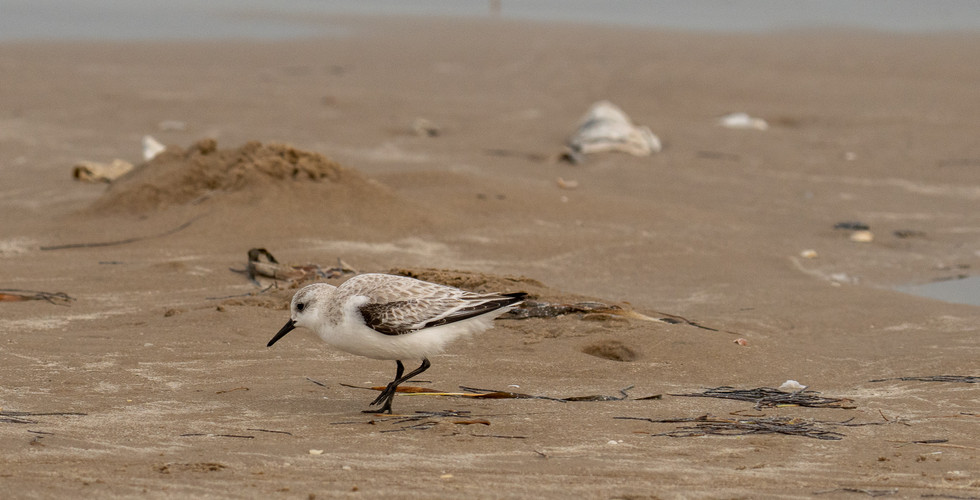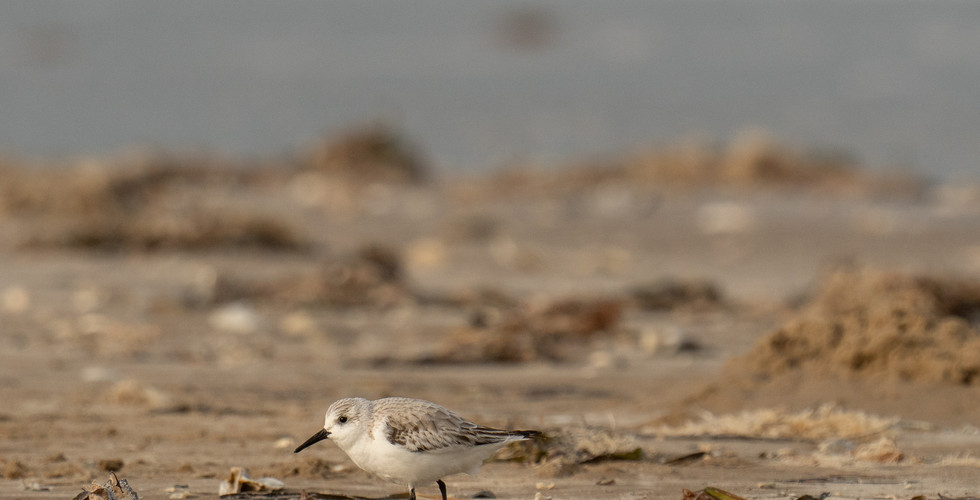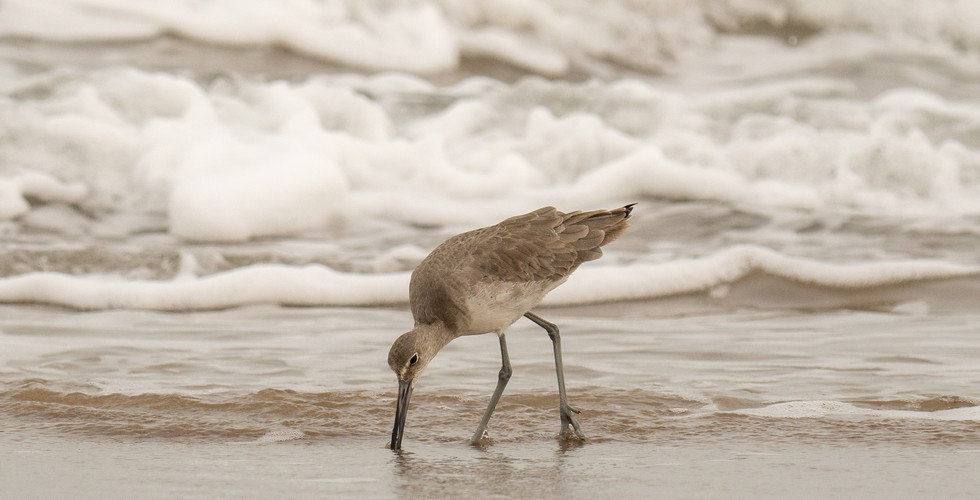I have been having so much fun watching and identifying various Shorebirds as we bike, walk and play along the water. Here are some of the smaller ones I've seen so far.
What is a Shorebird: Waders or shorebirds are birds of the order Charadriiformes commonly found along shorelines and mudflats that wade in order to forage for food (such as insects or crustaceans) in the mud or sand. The term "wader" is used in much of the world, while "shorebird" is used in North America, where "wader" may be used instead to refer to long-legged wading birds such as storks and herons.
The smallest one I've seen so far is the Sanderling which is a plump sandpiper. They gather in loose flocks to probe the sand of wave-washed beaches for marine invertebrates, running back and forth in a perpetual “wave chase.” They are super fast on their little legs!
Another one that is slightly bigger than the Sandpiper is the Ruddy Turnstone. I've haven't seen as many of these but did get a couple of pictures of a non-breeding adult. They flip rocks, pebbles, and seaweed along shorelines in search of food. They rarely wade in waters more than a few inches deep, generally foraging out of the water where the surf deposits shells, rocks, and seaweed.
Willets are larger shorebirds with long legs and thick, straight bills considerably longer than the head. They are often seen alone. They walk deliberately, pausing to probe for crabs, worms and other prey in sand and mudflats, or to pick at insects and mollusks.
And last but not least the Killdeer which have a large round head, large eye, and short bill like all plovers. They are especially slender and lanky, with a long, pointed tail and long wings. They spend their time walking along the ground or running ahead a few steps, stopping to look around, and running on again.




































































Comments